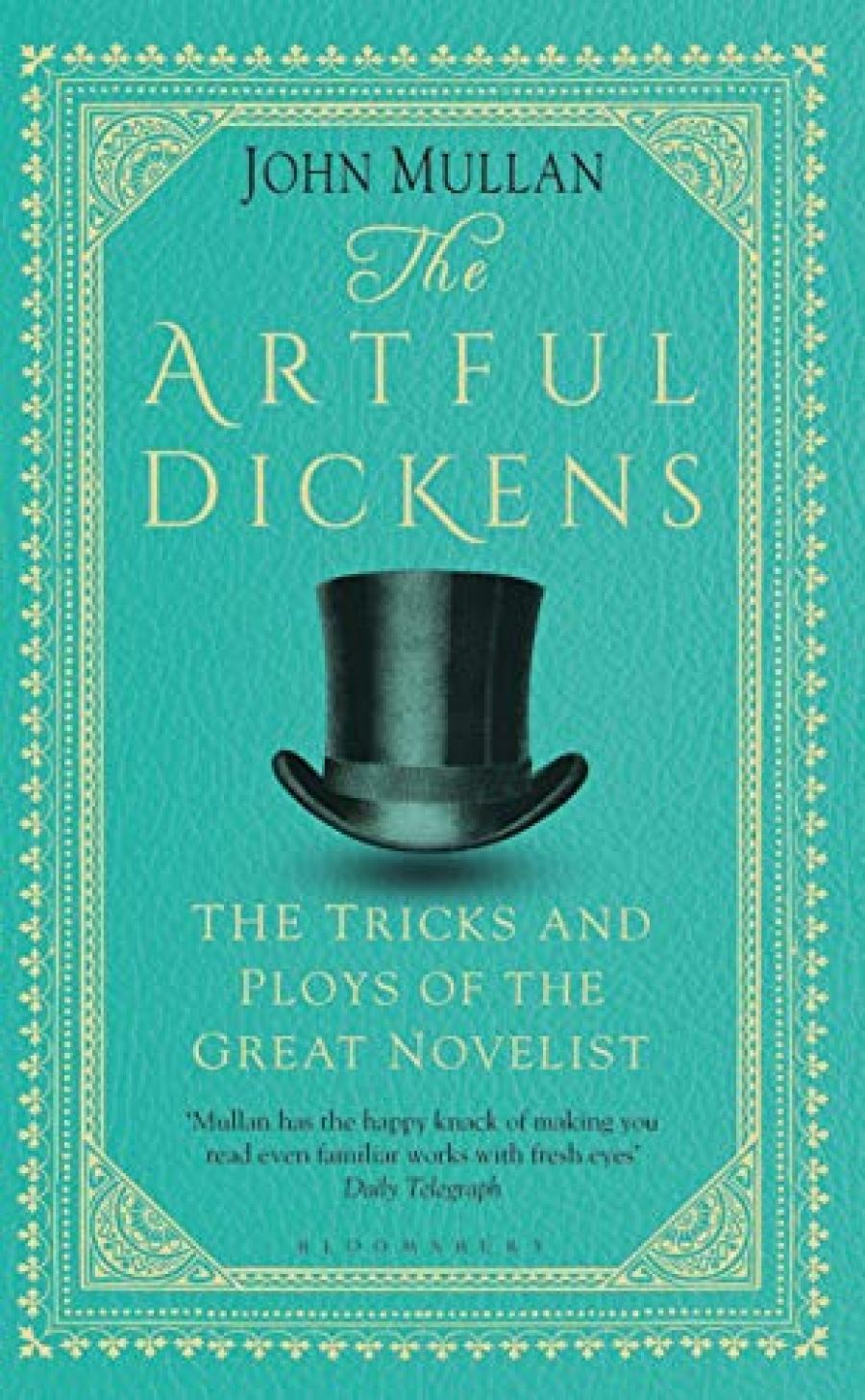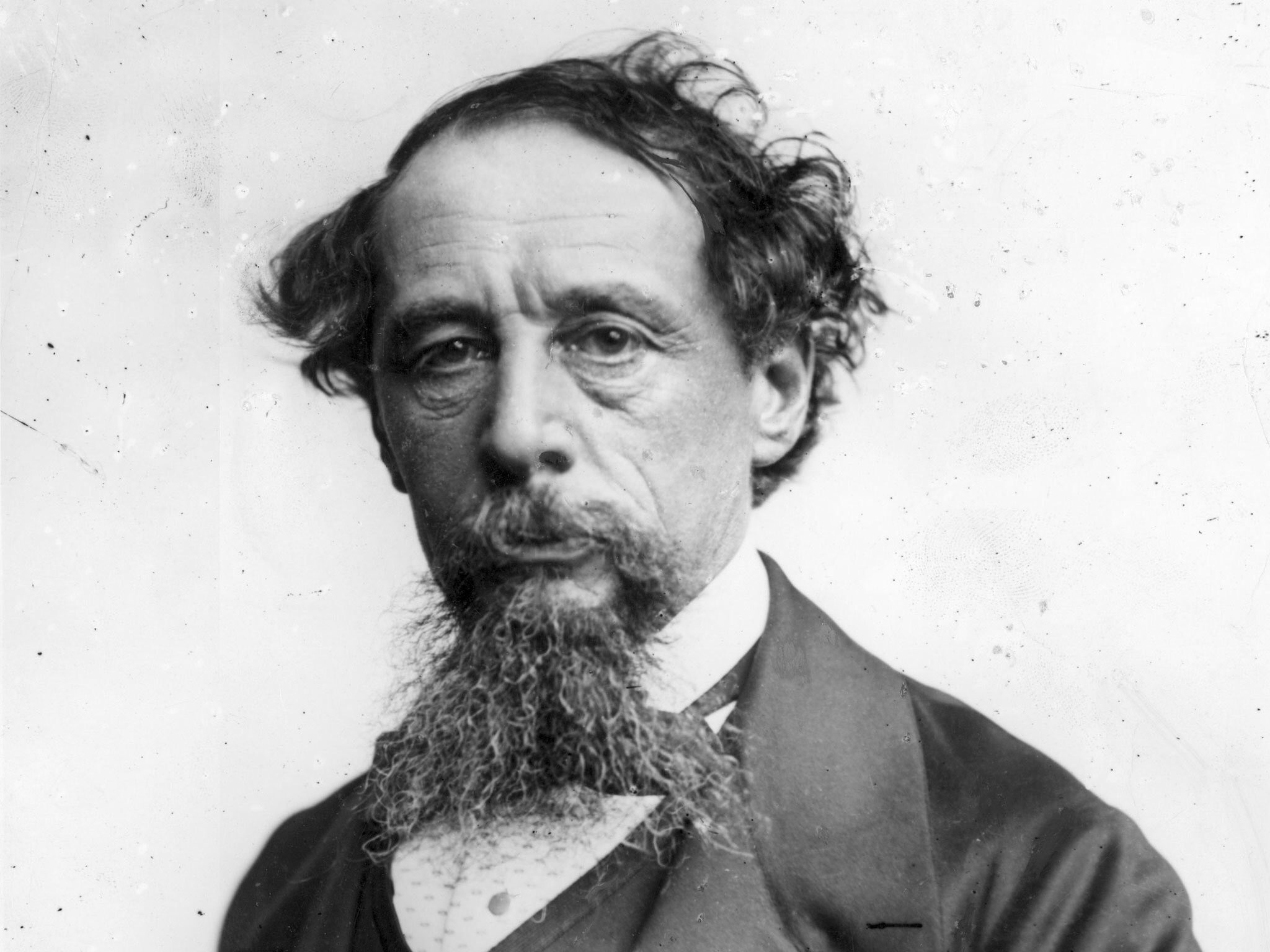
- Free Article: No
- Contents Category: Literary Studies
- Review Article: Yes
- Article Title: Sleights of hand
- Article Subtitle: Feats of legerdemain in Dickens’s novels
- Online Only: No
- Custom Highlight Text:
‘What is so good about Dickens’s novels?’ It is a question ‘oddly evaded by many who have written about him’, in John Mullan’s reckoning. ‘Gosh he is good – though so careless,’ Iris Murdoch wrote to Brigid Brophy in 1962. Many writers before and since have found Dickens not only improvisatory and self-indulgently digressive but also sentimental, melodramatic, and sermonising – a great entertainer rather than a good writer. Mullan undertakes to demonstrate that what appears to be carelessness is as often as not ‘technical boldness and experimental verve’. Composing ‘on the wings of inspiration’, in response to the exigencies of serial publication, Dickens essentially revised as he wrote. Yet, consulting the manuscripts of the novels, Mullan notes how meticulously he adjusted his diction and phrasing. Like Oliver Twist’s companion in crime, the Artful Dodger, who comes alive through his sleights of hand and language, the Artful Dickens is a magician in prose and a talented conjurer: ‘his feats of legerdemain might equally apply to his writing’.
- Article Hero Image (920px wide):

- Article Hero Image Caption: The novelist and critic Charles Dickens (Wikimedia Commons)
- Alt Tag (Article Hero Image): The novelist and critic Charles Dickens (Wikimedia Commons)
- Featured Image (400px * 250px):

- Alt Tag (Featured Image): The Artful Dickens
- Book 1 Title: The Artful Dickens
- Book 1 Subtitle: The tricks and ploys of the great novelist
- Book 1 Biblio: Bloomsbury, $29.99 hb, 448 pp
- Book 1 Readings Link: booktopia.kh4ffx.net/6be3AK
Considerable artfulness is at work in Mullan’s own writing. Disarmingly presented as a series of apparently disconnected and belletrist-sounding essays with titles such as ‘Fantasising’, ‘Smelling’, ‘Changing Tenses’, ‘Haunting’, ‘Laughing’, ‘Foreseeing’, ‘Drowning’, The Artful Dickens finds a web of connections in and between the novels, providing thoughtful and incisive analysis of a wide range of passages. Dickens’s figurative style is on display as a process of thinking as well as feeling, for both the writer and his characters. The chapter on fantasising explores the ‘as if’ habit of his similes and metaphors, showing how they bring alive the material world, while drawing apparently dissimilar elements into a relationship of analogy that has teleological implications.
In an earlier book, How Novels Work (2006), a collection of columns written for the Guardian, Mullan elaborated aims that underlie this new book too. Deploring the fact that academic literary criticism since the 1980s has ‘distinguished itself by its specialism and its obscurity’, he writes for more than one kind of reader – ‘the general reader’ encountered in book groups, but also for students and teachers as they might have been found in academic seminar discussions, ‘going back over a book you thought you knew, finding the patterns, or the inconsistencies, that you half-glimpsed before’, pursuing the question of ‘what makes a book live’. Mullan builds a persuasive case for an intelligible critical discourse and for the rehabilitation of the art of close reading.
Could Dickens swim? The answer is yes, as the letters record. From Broadstairs to Genoa, Dickens would take the plunge: ‘It is inexpressibly delicious.’ Mullan’s topics expand to include social history and biography, as well as the works of other novelists. Dickens’s enthusiasm for ‘the manly fashion’ of sea-bathing may have been a way of confronting the fear of death by water that preoccupies him. Like his marathon walks around London and beyond, his swimming is an outlet for irrepressible physical energy. The chapter headings that make a line-up of present-participial verbs draw attention to a physicality embodied in the writing. His sensuous relish for sights and smells functions to prompt memory, charting psychological development and temporal sequence. Dickens becomes increasingly interested in the question of temporality, reflected in the prolepsis and foreseeing in David Copperfield, and in the experimentation with past and present tenses in Bleak House.
In his dealings with ‘half-glimpsed inconsistencies’, Mullan uncovers sleights of hand that show Dickens in more than one state of mind. There are interpretative dilemmas caused by retrospective memory: in first-person narratives, a younger self – David Copperfield or Pip Pirrip, say – may be obliged to be aware of events that happened later. Then there are the blended or diverging voices of creator, narrator, and character as Dickens inhabits a seemingly inexhaustible cast of other voices. The comic exuberance and verbal inventiveness of Mrs Sairey Gamp often spring from her mangling of proverbial wisdom: ‘Rich folks may ride on camels, but it ain’t easy for them to see out of a needle’s eye.’ But this is capped by the pleasure she gives her creator: ‘She added daily so many strings to her bow that she made a perfect harp of it; and upon that instrument she now began to perform an extemporaneous concerto.’ Here is Dickens enjoying both Mrs Gamp and his own improvisatory method, in a way that marks their difference. If Dickens knows himself through knowing his characters, the lines of demarcation are not always so clear, most especially in those avatars of the self, David and Pip. The problem is played out in the drama of the split self that comes to dominate his last novels, and it is particularly evident in his treatment of sexuality.
Mullan’s penultimate chapter considers ‘Knowing about Sex’, the area where what Dickens knows, or can’t quite acknowledge, or wants the reader to know, is most problematic. Even the most fearless Victorian novelists were guarded or evasive about sex, although Mullan maintains that Dickens often makes us hear what is repressed. His discussion of the sexual domination and enslavement by lawyer Jaggers of his servant Molly is illuminating. His account of Dickens’s relationship with the young actress Ellen Ternan takes note of the most recent revelations about the callous and very public repudiation of Catherine, his wife of more than twenty years, who had borne him ten children. Defender and upholder of family values in his public persona and at Urania Cottage, the home for ‘fallen’ women he co-founded and closely superintended, Dickens went to extraordinary lengths to ensure that his cohabitation with Ellen was kept secret from his adoring public.
On the whole, Mullan agrees with the view that ‘his novels cannot face up to the truth of sexual desire and are distorted by the author’s Victorian propriety’. There is a case to be made, I think, for the sexual desire of the morally admirable Amy Dorrit. In the relationship between Annie Strong and her cousin Jack in David Copperfield, Dickens seems to be having it both ways about the question of adultery, heightening suspense and teasing readerly suspicions, the artful dodger indeed. Mullan sides with David in interpreting Annie’s indecipherable look, when Jack departs for his exile in India, as betraying an unmentionable sexual transgression. Yet her demeanour is later revealed as shame caused by Jack’s attempt to seduce her: he has stolen one of her symbolic cherry-red ribbons, and has spoken ‘words that should have found no utterance’. Assumptions about Annie’s guilt are dispelled when she professes that she has always been the admiring, loving, and unfailingly loyal wife of her elderly husband. Or did Dickens change his mind during the spaces between the relevant chapters? The love between an older man and a much younger woman takes an interestingly different turn in Bleak House, the novel that was to follow. The lure of romantic and erotic love represented in Pip’s feelings for Estella, in Great Expectations, shows Dickens turning his own guilt and shame into the most dazzlingly inventive revelation of his tricks, as Mullan finds new ways of showing.


Comments powered by CComment